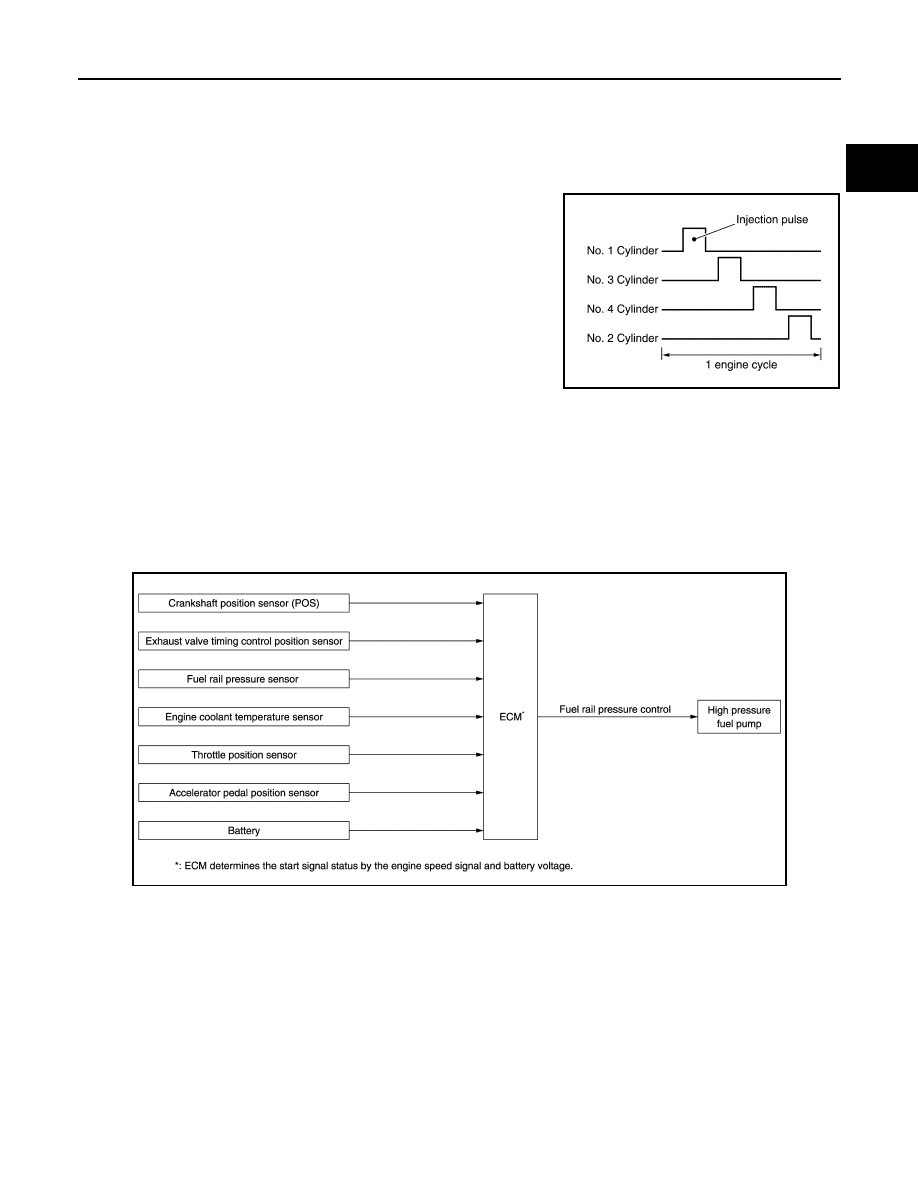Nissan Juke F15. Manual - part 455

SYSTEM
EC-633
< SYSTEM DESCRIPTION >
[MR EXCEPT FOR NISMO RS MODELS]
C
D
E
F
G
H
I
J
K
L
M
A
EC
N
P
O
“Long-term fuel trim” is overall fuel compensation carried out over time to compensate for continual deviation
of the “short-term fuel trim” from the central value. Continual deviation will occur due to individual engine differ-
ences, wear over time and changes in the usage environment.
FUEL INJECTION TIMING
Sequential Direct Injection Gasoline System
Fuel is injected into each cylinder during each engine cycle accord-
ing to the ignition order.
STRATIFIED-CHARGE START CONTROL
The use of the stratified-charge combustion method enables emissions-reduction when starting the engine
with engine coolant temperature between 5
°C (41°F) and 40°C (104°F).
FUEL SHUT-OFF
Fuel to each cylinder is shut-off during deceleration, operation of the engine at excessively high speed or oper-
ation of the vehicle at excessively high speed.
FUEL PRESSURE CONTROL
FUEL PRESSURE CONTROL : System Diagram
INFOID:0000000012198203
FUEL PRESSURE CONTROL : System Description
INFOID:0000000012198204
INPUT/OUTPUT SIGNAL CHART
JPBIA4704GB
JPBIA4920GB